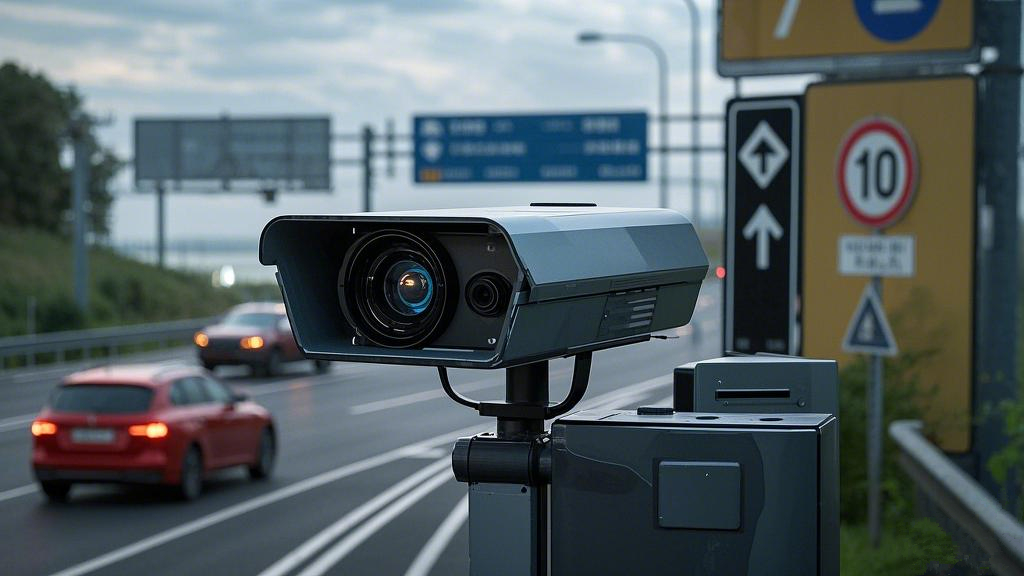The Complete Guide to Traffic Radar Cameras: Technology, Applications & Selection

Introduction to Traffic Radar Cameras
Traffic radar cameras have become indispensable tools for modern law enforcement and traffic management. Combining Doppler radar technology with high-resolution imaging systems, these devices accurately measure vehicle speeds while capturing evidentiary photos/videos. The global traffic enforcement camera market is projected to reach $3.8 billion by 2027 (MarketsandMarkets, 2023), driven by increasing road safety regulations worldwide.
How Traffic Radar Cameras Work: Core Technology Explained
1.1 Radar Speed Measurement Fundamentals
Modern devices use 24.15 GHz K-band or 34.36 GHz Ka-band frequencies to calculate speed through Doppler shift principles. Advanced models achieve ±1 mph accuracy even at 1,500 ft distances.
1.2 Integrated Camera Systems
Key photographic capabilities:
- 1080p/4K video recording
- License plate recognition (LPR) accuracy: 97.3% (IEEE 2022 study)
- Infrared illumination for night operations
1.3 Data Processing & Connectivity
Cloud-based solutions now enable real-time:
- Speed violation alerts
- Automatic license plate database checks
- Direct integration with municipal citation systems
Types of Traffic Radar Cameras
2.1 Fixed Installation Systems
Permanent solutions for high-risk zones:
- School zones: Reduce speeding by 63% (NHTSA)
- Construction areas
- Accident-prone intersections
2.2 Mobile Radar Camera Units
Portable systems for flexible deployment:
- Vehicle-mounted solutions
- Tripod-based temporary setups
- Average setup time: <8 minutes
2.3 Handheld Radar Guns with Camera Integration
Latest models combine:
- 360° targeting capability
- Continuous photo burst mode
- GPS-stamped metadata
Key Features Comparison: Choosing the Right System
|
Feature |
Basic Models |
Professional Systems |
Enterprise Solutions |
|
Detection Range |
800 ft |
1,500 ft |
2,000+ ft |
|
Weather Resistance |
IP65 |
IP68 |
MIL-STD-810G |
|
Data Storage |
128GB |
1TB SSD |
Cloud Unlimited |
|
Multi-Lane Tracking |
2 lanes |
6 lanes |
12 lanes |
|
Compliance Certifications |
CE |
NIST-Traceable |
IACP/EC Type Approved |
3 Critical Selection Factors for Traffic Radar Cameras
3.1 Detection Accuracy Standards
Verify compliance with:
- NCHRP Report 795 testing protocols
- IACP (International Association of Chiefs of Police) certification
- EN 16803-2:2016 (EU standard)
3.2 Environmental Durability
Essential ratings:
- Operating temperature: -40°F to 158°F
- IK10 vandal resistance rating
- Salt fog corrosion protection
3.3 Legal Defensibility
Court-approved systems must provide:
- Tamper-proof audit logs
- Chain-of-custody documentation
- RAW image preservation
Installation Best Practices & Maintenance
4.1 Site Selection Criteria
Optimal placement considers:
- 85th percentile speed data
- Crash history analysis
- Road geometry factors
4.2 Calibration Protocols
Maintain accuracy through:
- Bi-weekly tuning fork tests
- Annual NIST traceable calibration
- Firmware update schedules
4.3 Data Security Measures
Essential protections:
- AES-256 encryption
- Two-factor authentication
- SOC 2 Type II compliance
Global Regulatory Landscape (2023 Updates)
|
Jurisdiction |
Key Requirements |
|
USA |
MUTCD Section 4O compliance |
|
EU |
GDPR-compliant data handling |
|
UK |
DfT Type Approval Certification |
|
Australia |
AS 4691.2:2021 standard |
Future Trends in Radar Camera Technology
5.1 AI-Powered Analytics
Emerging capabilities:
- Predictive speeding pattern analysis
- Driver behavior profiling
- Real-time crowd-sourced data integration
5.2 5G-Enabled Systems
Reduced latency enables:
- Sub-50ms violation-to-ticket processing
- V2X (Vehicle-to-Everything) communication
5.3 Multisensor Fusion
Combining radar with:
- LiDAR for 3D tracking
- Thermal imaging for adverse weather
- Acoustic sensors for modified exhaust detection
Top 10 Traffic Radar Camera Manufacturers
- Jenoptik (Germany) – Market leader with 34% global share
- Kria (USA) – Pioneer in AI-powered systems
- Vitronic (Germany) – Mobile unit specialists
- Redflex (Australia) – School zone solutions
- Sensys Gatso (Netherlands) – Cloud integration experts
Cost Analysis & ROI Projections
|
System Type |
Initial Cost |
5-Year Maintenance |
Violation ROI Threshold |
|
Fixed Station |
$38,000 |
$6,200 |
17 violations/week |
|
Mobile Unit |
$24,500 |
$3,800 |
9 violations/week |
|
Handheld |
$8,900 |
$950 |
3 violations/day |
FAQ: Traffic Radar Camera Essentials
Q: Can radar cameras detect speed in moving patrol cars?
A: Yes, advanced “same-direction” models maintain accuracy up to 120 mph patrol speeds.
Q: How do weather conditions affect performance?
A: Modern 24 GHz systems maintain >98% accuracy in heavy rain (≤2″/hr).
Conclusion: Optimizing Traffic Safety Through Technology
With 1.35 million annual road fatalities worldwide (WHO 2023), traffic radar cameras remain critical for achieving Vision Zero objectives. When selecting systems, prioritize court-defensible accuracy, enterprise-grade durability, and scalable data management. Contact our certified traffic technology specialists to schedule a free needs assessment and demo of ISO 17025-certified solutions.
